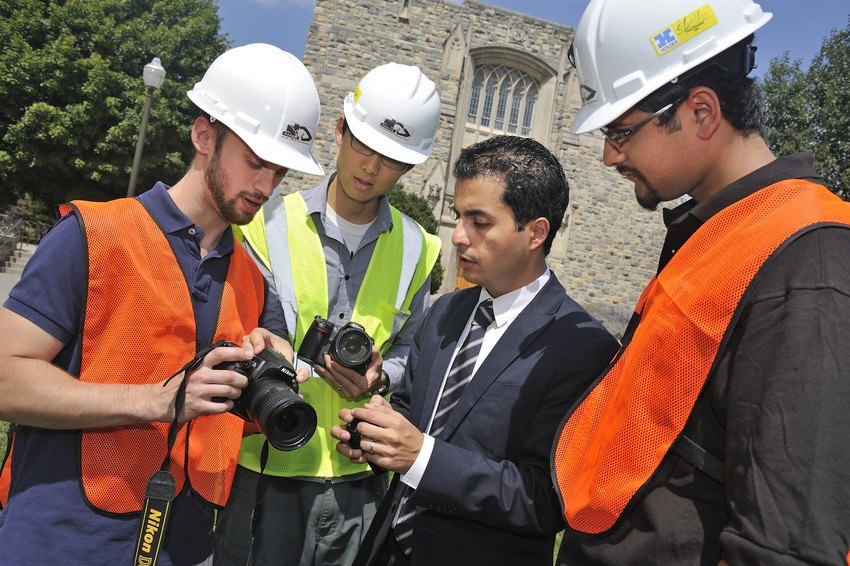by DARYL LANG, FieldLens | Aug 31, 2015
Construction technology promises huge improvements… but lately, is it getting a little too creepy?
This animation from an MIT Technology Review article about drone surveillance caught our eye last week. The animation shows a jobsite with concrete finishers and carpenters at work. An overlay box surrounds each worker along with live information about what he’s doing. Words like “standing,” “bending,” and “waiting” pop up to describe their positions.
It’s truly like something from a Terminator movie.
How would it feel if your boss could follow a little box explaining what you were doing every second? (I’m picturing mine saying, “Blogger, searching for Terminator GIFs.”) Other sites have already interpreted this construction clip as evidence drones are watching us. That is scary.
But let’s take a closer look at this technology. We’ve never seen any drone tech that can do this. What’s really generating the data in this clip? Where did it come from? Can a computer really analyze worker behavior with this kind of live detail?
The short answers are: The video was labeled by humans… it came from an academic research study… and not yet.
Earlier this year, researchers at the University of Illinois at Urbana-Champaign’s Raamac Lab (Real-time and Automated Monitoring &Control) published a paper in ASCE’s Journal of Construction Engineering and Management, entitled Crowdsourcing Construction Activity Analysis from Jobsite Video Streams. As authors Kaijian Liu and Mani Golparvar-Fard write, “The ability to automatically recognize and understand worker and equipment activities from videos is still rather limited.”
So, in a series of experiments, the researchers asked crowdsourced workers from the Amazon Mechanical Turk (AMT) service to identify what’s happening in construction videos. AMT is often used to sift through data that humans can analyze faster than machines. These non-experts were able to analyze the construction videos with 85% accuracy. The researchers hope this data set can serve as a baseline for developing algorithms that will some day analyze jobsite videos automatically. This method could reduce the time it takes to evaluate a jobsite and help field workers focus on how to make improvements.
So, one day we might have access to realtime software that can produce Terminator-vision videos like this. But not today.
We are a little closer to a day where jobsite cameras—whether mounted on aerial drones or not—can take realtime images of the jobsite and turn them into actionable data. At best, this will help everyone make better-informed decisions. At worst, it will mean Big-Brother-style surveillance on the day-to-day lives of workers. We’ll have to rely on human judgement to get it right.
The rise of the machines is coming. But as of today, we’re still in control.

Tech tips: University of Illinois Engineering Prof. Golparvar-Fard instructs student researchers on jobsite camera use.





Discussion
Be the first to leave a comment.
You must be a member of the BuiltWorlds community to join the discussion.